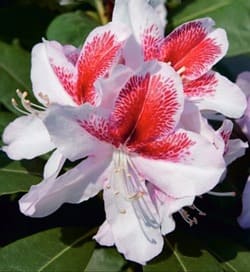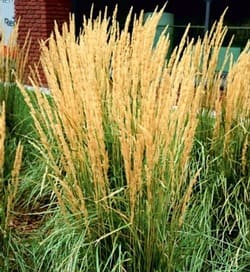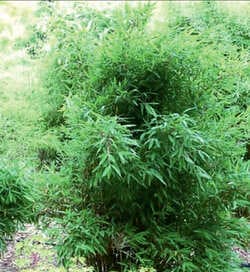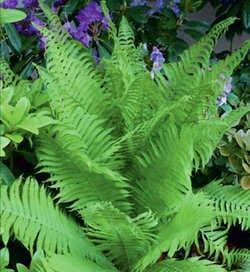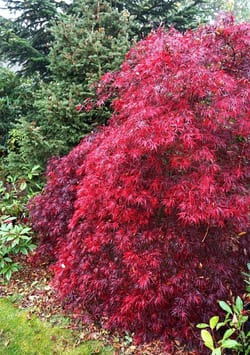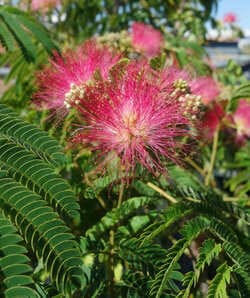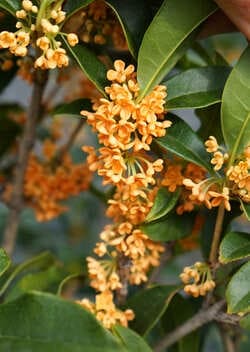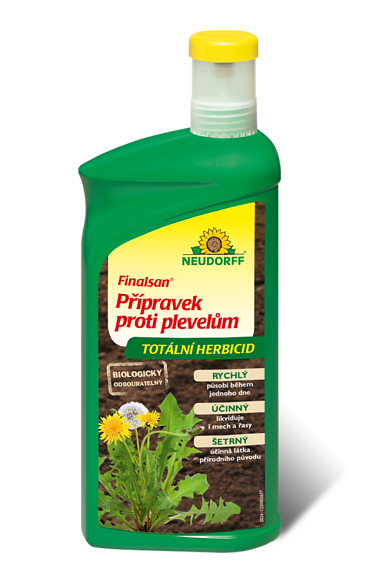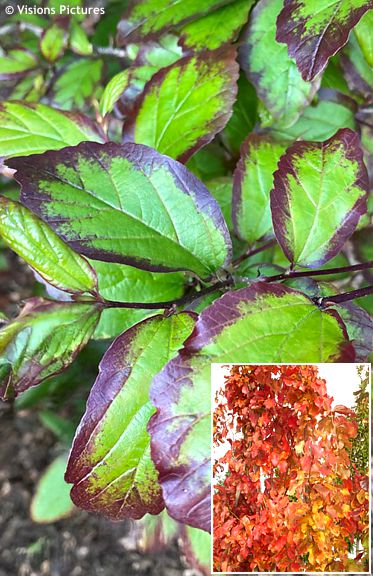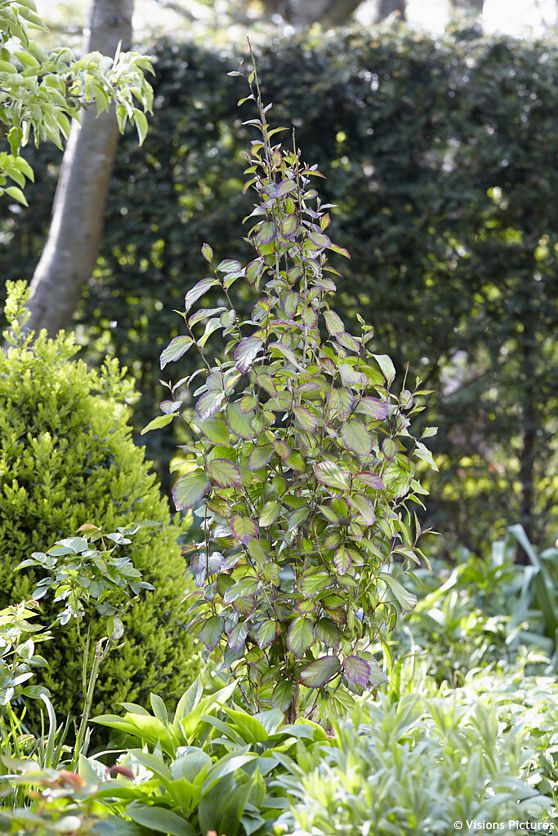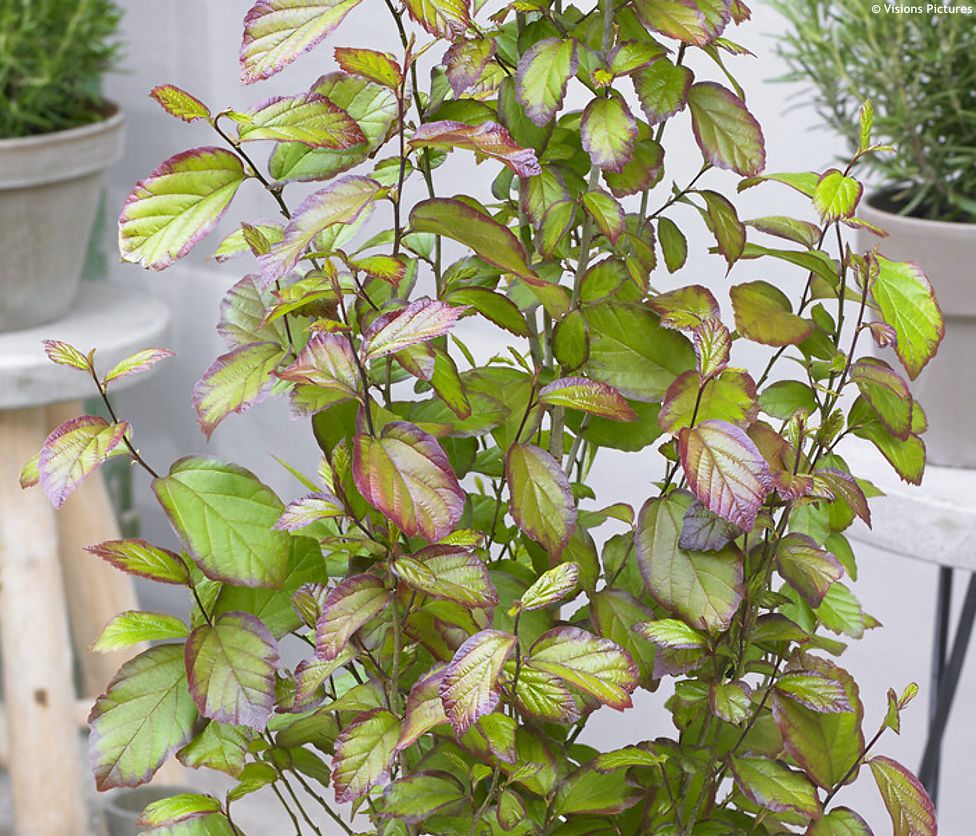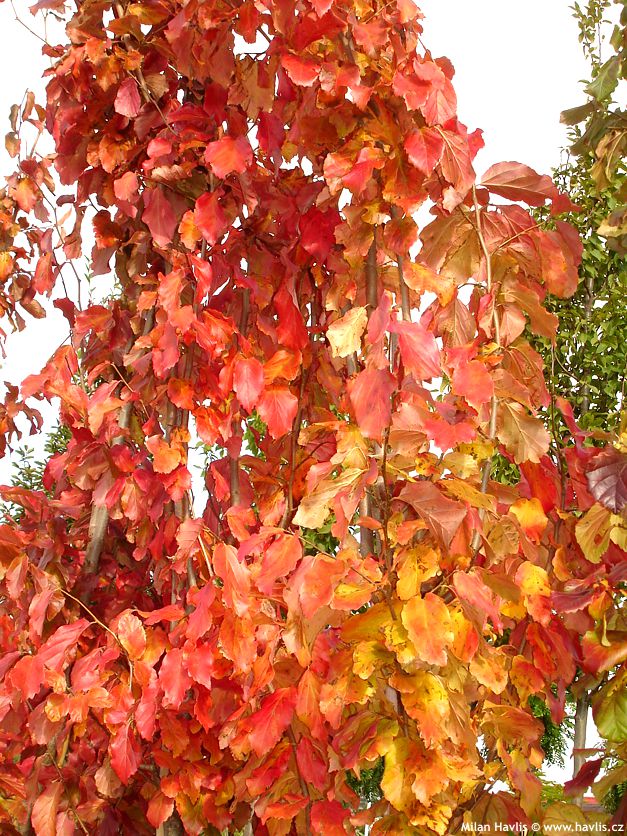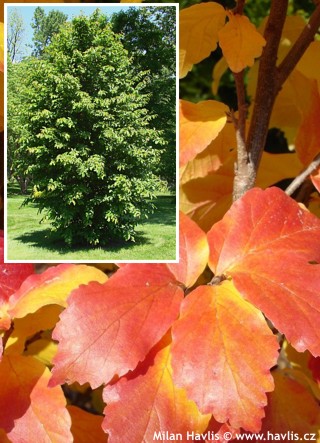Parrotia persica 'JL Columnar' PERSIAN SPIRE® Persian ironwood
Parrotia
The genus Parrotia is small but botanically remarkable. It belongs to the witch‑hazel family (Hamamelidaceae), known above all for witch‑hazels with fragrant winter flowers, as well as Fothergilla and Corylopsis. The genus includes only a few species, the best known being the Persian ironwood, while its Chinese relative Parrotia subaequalis is rare and endangered. Scientists have found Parrotia pollen in middle Miocene fossils, proving its existence on our planet 12 to 14 million years ago – surprisingly in what is now southern Austria, where a subtropical climate prevailed at the time. It is valued above all for its extraordinary resilience – tolerating both drought and damp conditions, adapting well to European climates, and becoming a symbol of toughness. This is likely why in English it earned the name “ironwood”: its timber is exceptionally hard and was used for durable objects.
As its name suggests, the Persian ironwood truly originates in Persia, that is, in present‑day Iran. The precise natural range is the Alborz Mountains in northern Iran near the Caspian Sea. In the mountain forests of Iran and Azerbaijan it sometimes forms entire stands known as parrotietum. It was introduced to Europe in the mid‑19th century and soon appeared in the Royal Botanic Gardens at Kew, from where it spread to other English gardens. It was first described by the German botanist Carl Anton von Meyer, who worked in the Russian Empire, and named it in honour of his contemporary Georg Friedrich Parrot (1791–1841), a German naturalist at the University of Dorpat. Parrot undertook expeditions to Turkey and Persia after 1830, led the first ascent of Mount Ararat, and collected unknown plants along the way. His adventurous spirit captivated Meyer and inspired him to pay tribute in this way.
When people think of Persian ironwood, most imagine a broad, spreading tree with dazzling autumn colours. ‘Vanessa’ once showed that it could grow more narrowly, but with age it widens and loses its slender form. PERSIAN SPIRE® plays in a different league – it was chosen from the very beginning for its consistently narrow, columnar shape, which it retains even in maturity. It stands like an elegant pillar of colour, fitting into a small garden or an urban front yard, and it can even thrive in a large container.
Its leaves are smaller than those of the species or of ‘Vanessa’, but they make up for it with colour. In spring they emerge entirely purple, in summer they settle into green with a wine‑red edge, and in autumn they stage a multi‑phase show – first salmon‑orange, then bright red, and finally purple. It is like watching an artist create a wash painting or patina – beginning with a light base, gradually overlaying deeper tones, and as the colours blend and flow into one another, the result is simply breathtaking. These transformations are exactly what set it apart from all other parrotias.
The flowers are small clusters of crimson stamens appearing at the end of winter, inconspicuous yet decorative on closer inspection. Older specimens also reveal attractive bark – peeling in thin plates to expose a mosaic of cinnamon, grey and green shades, keeping the tree ornamental even outside the growing season. Thanks to these features it is sought after even in the form of a slimmer multi‑stem. Because the cultivar is young and long-term data are lacking, its ultimate height is not yet verified; based on comparative growth rates with columnar ‘Vanessa’, we can estimate 6–9 m tall and 1.5–2.5 m wide in our conditions (in containers or on drier sites, expect the lower end).
The cultivar PERSIAN SPIRE® was discovered by nurseryman John Lewis in 2011 in the state of Oregon, USA. It was not in the wild, but right in the cultivated setting of his nursery, among ordinary seedlings of Persian ironwood. There he noticed one young tree that stood out – growing narrowly and columnar, with smaller leaves and unusual purple spring foliage. He labelled this seedling ‘JL Columnar’, began propagating it, and within a few years it was clear he had found a new cultivar, which in 2014 was granted patent PP24951.
Although Persian ironwood usually demands space, PERSIAN SPIRE® fits even into a small garden thanks to its narrow habit. Give it a sunny position where its structure and autumn colouring in warm tones can be fully appreciated. For contrast, combine it with shrubs or trees of sharper autumn hues such as sweetgums or Japanese maples. It prefers fertile, deep soil, moist but well‑drained; once established it copes excellently with drought, urban pollution, severe frosts and summer heat. For the best autumn colours, it is better grown in acidic conditions, though in nature it also thrives on highly calcareous soils. It is virtually care-free: apart from occasional watering only in the first year after planting it needs nothing but admiration. Pruning can be carried out before budbreak from late winter to early spring. It is long‑lived and suffers neither from pests nor diseases. Fully hardy to about −34 °C (USDA zone 4). This variety will tolerate a large planter with regular feeding and watering.
Last update 18-11-2025
Goods are shipped all over Europe. For Russia and U.K. and for further details please read about SHIPPING OPTIONS HERE.
Are you interested in a serious discount for orders NOV-FEB? Check your options here.
THE PRICES INCLUDE VAT of 15%. For quick conversion you can use 1 CZK = approx. 0.04 EUR
- STANDARD QUALITY - Plants of this group are 1st class quality with number of branches and overall density adequate to their size and age, considering they were container grown.
- DE LUXE QUALITY - This label guarantees a luxurious quality of manually selected plants that, compared to their height and age, are exceptionally dense and beautiful.
- EXTRA - These plants are usually mature and bigger specimens with exceptional overall appearance.
- STANDARD (as described in the plant form) means a tree with a trunk of 190-210 cm and a crown at the top, unless specified differently. The commercial size for trees is their girth measured in the height of 1m from ground.
- HOBBY - These plants are of the same quality as our standard-quality plants but younger and therefore cheaper.
- SHRUB - a woody plant with branches growing bushy from the ground level.
- HALF-STANDARD or MINI-STANDARD - a small tree with shorter trunk, its size is usually specified.
- FEATHERED - These are trees with branches growing already from the base of the trunk and up along the stem.
- GRASSES and PERENNIALS - Sizes given usually read the diameter of the pot or the clump, as specified.












